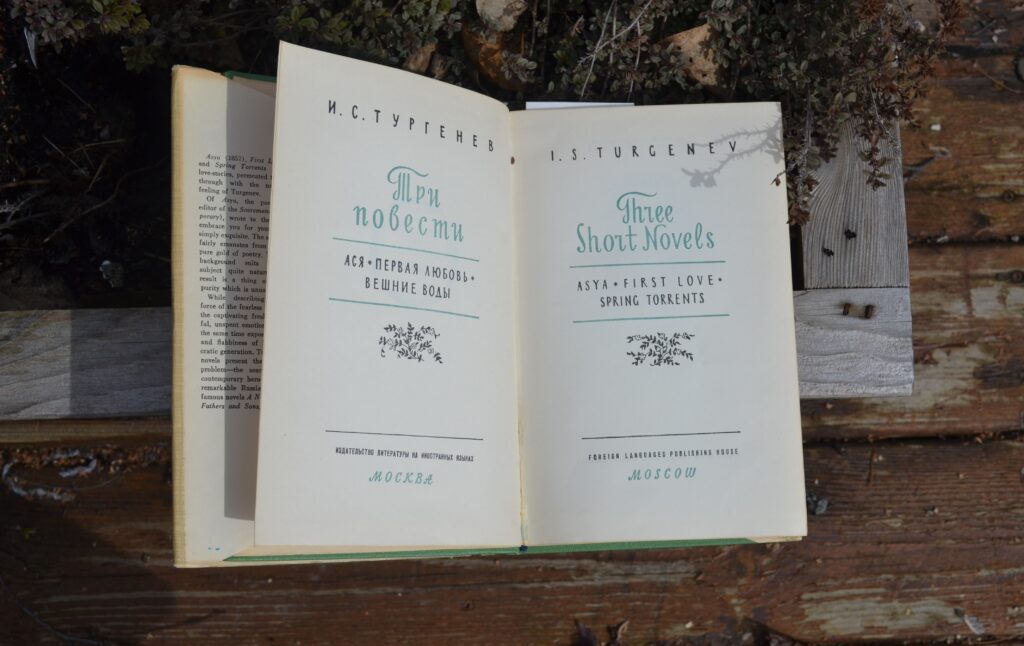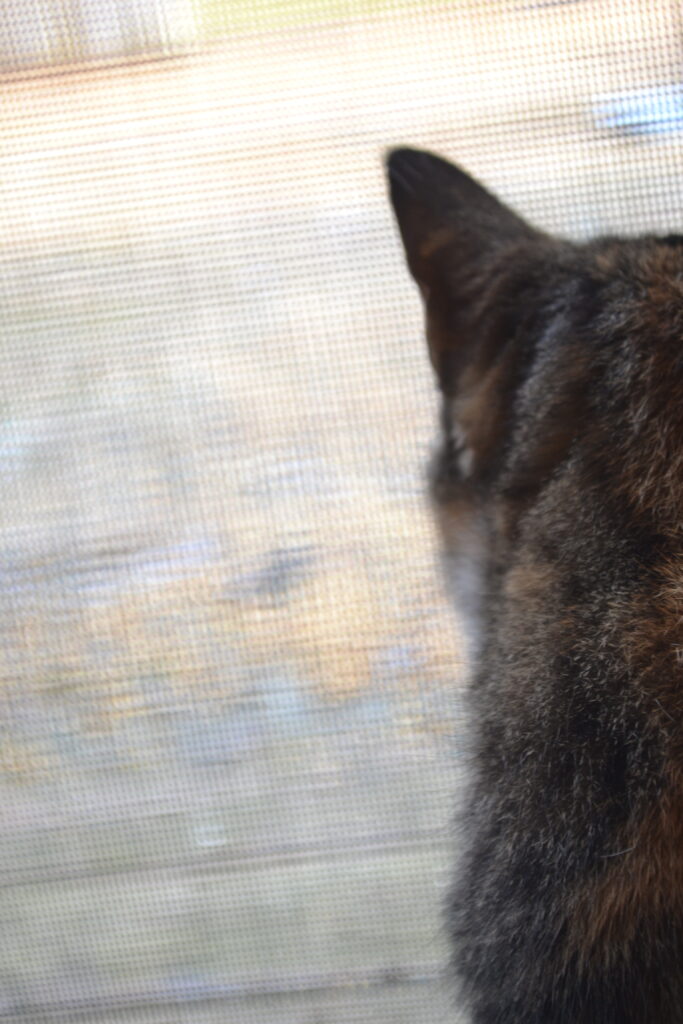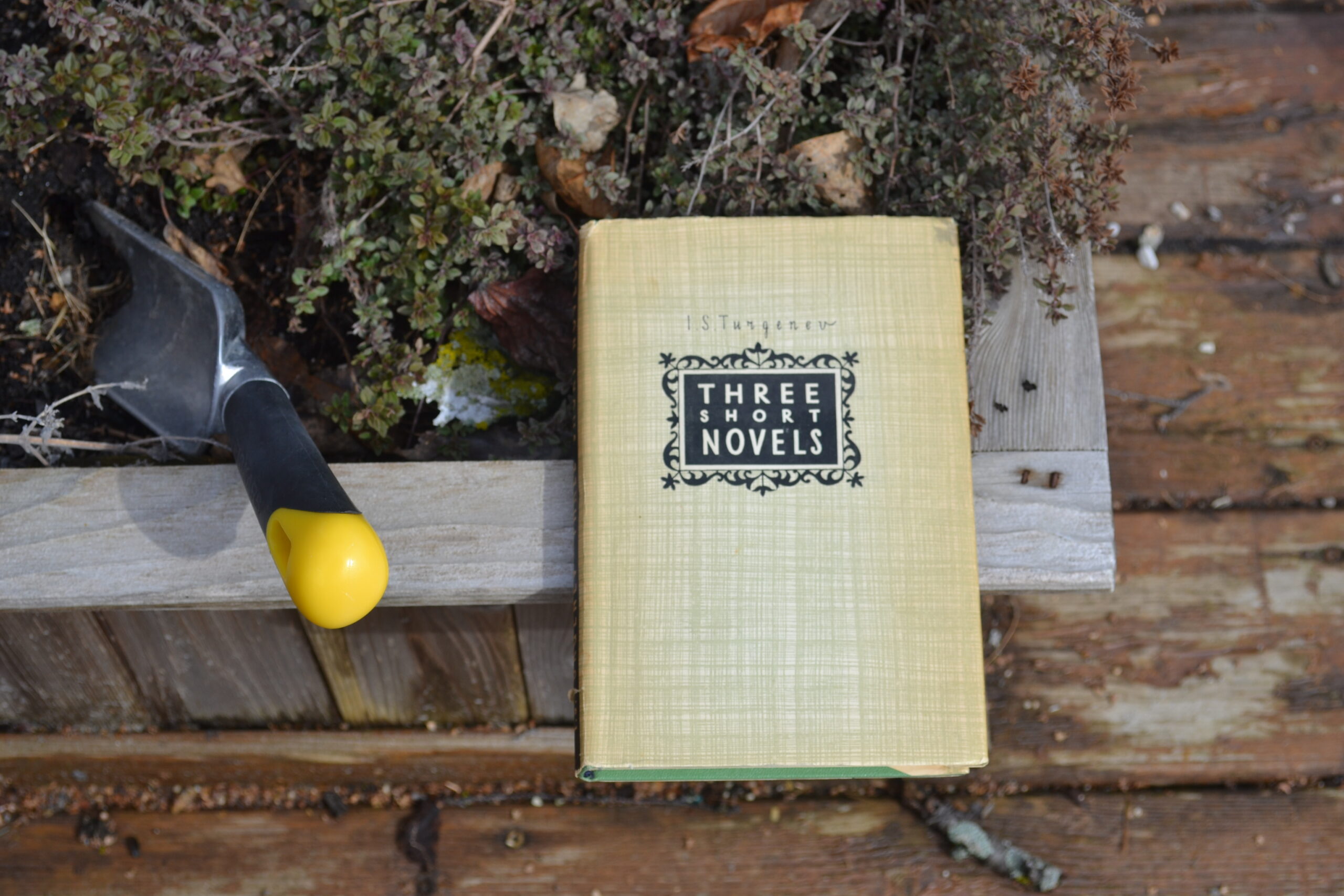The Early Days of Spring
After three years I’ve learned that March can be a weird month in the snow belt. Sometimes we get sun and the snow disappears — then the next morning I’m opening the curtain in the sitting room to an even blanket of the white, fluffy, cold stuff. I love winter, but after five months of it I crave a bit of sunshine and a breeze that doesn’t freeze my cheeks.
I’m excited that the time has come where we can open the door and let the fresh air stream through the screen and into the house while the cats watch the birds. More than on the first of January, this, to me, is the New Year. This is when the renewal of the seasons really begins, as the earth wakes up and returns to life.
While it’s true I hate the mud, I can deal with it to see the snowdrops and crocuses burst up through the remains of last year’s grass.
One Volume, Three Novels

The book I’m writing about this week is actually three of Turgenev’s short novels in one and, to be honest, volumes like this are not my favourite. I like to read a book, record it in my book journal, and then put it on my shelf. It feels like my reading flow or process, for some reason. Like I need to carefully consider each novel. Compiled editions seem to almost want me to digest too much at once.
Part of hunting for rare books involves an acceptance that sometimes the text you’re looking for will be in an edition that includes other text as well. When that happens, all you can do is count yourself lucky you found what you were searching for and think of the rest as an unexpected bonus that you may enjoy reading just as much.
The Three Short Novels
Asya (1858)
The first of this collection of Turgenev works — as well as being the shortest — Asya is a story about a young man who meets a brother and sister travelling through Germany. The sister, Asya, is young woman caught between the social classes, her father being a member of the upper classes and her mother a housekeeper who refused to marry to instead raise her daughter outside of the main house. Upon her mother’s death, Asya moves to the main house and then upon her father’s death becomes her brother’s ward.
However, Asya is drastically different from her brother. Her emotions run wilder and deeper and, though they are siblings, their backgrounds are drastically different. Asya struggles to reconcile her childhood with the world she now moves in and when she falls in love with the narrator, turmoil erupts, and ends abruptly with the siblings packing up and leaving, never to be seen again.
The narrator becomes an old man, reflecting on how he lost Asya and the feelings he had for her.

First Love (1860)
First Love (Pervaya lyubov) is the story of a young man falling in love with his neighbour, only to find out that she’s having an affair with his father. A disturbing tale of disillusionment and heartbreak, First Love moves at a very fast pace, but that doesn’t mean that it loses any sense of atmosphere. Turgenev does an excellent job capturing the emotional upheavals of teenage years, and the awkward horror of the transition between childhood and adulthood when one begins to more objectively observe the world around them.
What’s also disturbing? In my brief research on First Love, I read that this story is autobiographical.
Spring Torrents (1872)
Often referred to as Turgenev’s greatest novel, Spring Torrents (Veshniye vody) is the most substantial work in the volume — and the most complex. It is the story of Sanin who in Frankfurt happens to meet a young woman that he fights a duel for, falls in love with, and becomes engaged to. Then in an effort to sell his estate for his upcoming nuptials, he has an affair with a married woman, becoming her humiliated slave and breaking his engagement via letter. Later on in old age, after having been long discarded, he makes an effort to find his former fiancée. He discovers she has moved to America, married, and has five children. Rumor has it that Sanin sells his possessions in contemplation of moving to America himself.
Themes of Spring and Youth

All three short works explore common themes and contain common imagery. All of them include lush descriptions of nature to illustrate themes of youth, budding love, and the springtime period of each of the protagonist’s lives. Unlike much of Turgenev’s work, these stories do not focus on politics — with the exception of Asya’s upbringing.
I’ve read both On the Eve and Rudin previously and I’ve always been impressed with Turgenev’s technique. He creates a sparseness that lets the story flow at a very fast pace without leaving the reader longing for more details. The tone he uses is unique in the sense that it resembles a narrative being told to the reader over an evening coffee or in the peace of a rural evening far away from noise and bustle. There’s a reflective quality in the phrasing and how the narrators’ introspections are woven into the events. A regretful musing that has heavy notes of futility and waste. Of something important slipping away, never to be recovered with only the narrators’ own actions to blame.
Asya, First Love, and Spring Torrents are short works but that doesn’t make them less masterful pieces of writing, and each are definitely worth a read.

The Birds
Recently, I’ve started practicing between five and ten minutes a day of mindfulness meditation. Usually what I do is I sit in my armchair with a book on my lap with the door open and the breeze blowing gently through the sitting room. I watch the tabby cats watching the squirrels, and I listen to the birds.
We’re lucky to have a big backyard with big trees, so there are a lot of them.
It’s so calming to hear birdsong, it becomes a lot easier to just breathe and relax. And when I start to read, it’s the perfect music.
